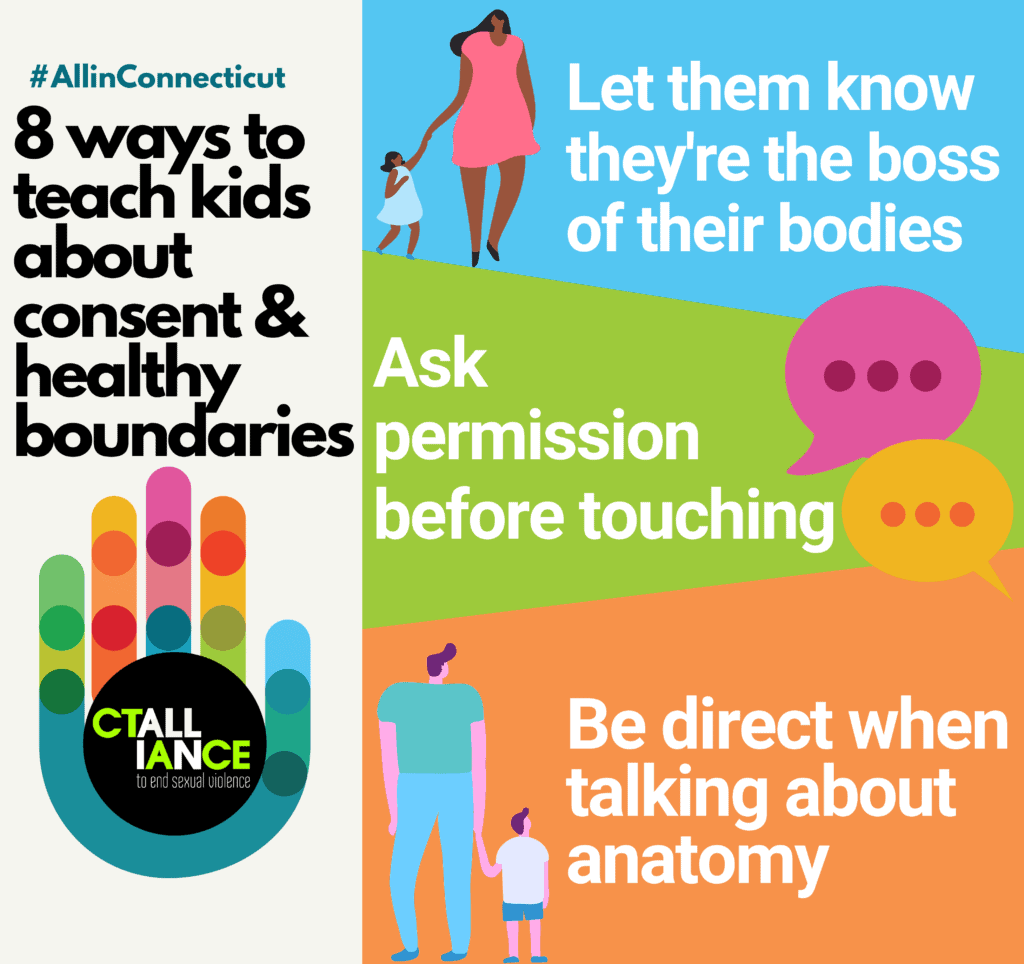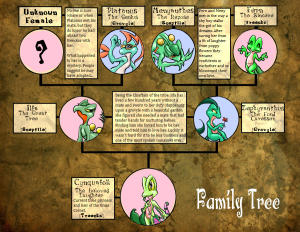Teaching kids consent is essential and should start early. It involves body safety, boundaries, and respecting others’ boundaries through open communication and modeling.
It’s crucial to emphasize that consent means always choosing to respect others’ boundaries and teaching children that their bodies belong to them, empowering them to assert their autonomy confidently. Instilling the concept of consent from an early age lays a strong foundational understanding for children to navigate complex topics as they grow older.
Teaching kids about body literacy and the difference between safe and unsafe touch further supports the development of healthy boundaries and mutual respect. By incorporating age-appropriate activities and open conversations, parents and educators can effectively guide children on the importance of navigating consent in various aspects of their lives.
Table of Contents
ToggleUnderstanding Consent
Teaching kids about consent is crucial for their personal safety and well-being. It is important to explain to children that their bodies belong to them, and they have the right to decide who can touch them and when. By teaching consent at a young age, we can empower children to establish healthy boundaries and respect the boundaries of others.
What Is Consent?
Consent is giving permission or agreement for something to happen. It is essential in respecting boundaries.
How To Teach Young Children About Consent
1. Start with basic concepts: teach children about personal boundaries.
2. Encourage them to understand the importance of asking before touching others.
3. Role-play scenarios to demonstrate the meaning of consent.
4. Use everyday situations to teach consent, such as sharing toys or giving hugs.
Teaching kids about consent from a young age is crucial in fostering healthy relationships and promoting respect for others’ autonomy.

Credit: www.walmart.com
Teaching Tools
Welcome to our Teaching Kids Consent Guide! In this section, we will explore essential teaching tools that can help children learn about consent in a positive and empowering way.
Practice Reading Facial Expressions
One effective teaching tool is to encourage children to practice reading facial expressions. This can help them understand non-verbal cues and recognize emotions in others.
Modeling Consent
Another valuable tool is modeling consent in everyday interactions. By demonstrating respectful communication and honoring personal boundaries, adults can set a powerful example for children to follow.
Teaching Children About Boundaries
When teaching children about boundaries, it’s important to emphasize the importance of respecting personal space and understanding that everyone has the right to set limits for themselves.
Age-appropriate Education
Age-appropriate education on teaching kids consent is crucial for fostering a culture of respect and understanding. By starting early and using age-appropriate language and activities, children can learn about consent and bodily autonomy, empowering them to set and respect boundaries at every stage of their development.
This approach lays a strong foundation for more complex discussions as they grow.
When To Introduce The Concept Of Consent
Introducing the concept of consent to children is a crucial step in fostering healthy relationships and promoting boundaries from an early age. While it’s important to start teaching consent as soon as a child begins to understand basic communication, the understanding of consent can vary at different ages.
Teaching Consent To Late Elementary And Middle School Kids
As your child nears the late elementary and middle school years, they should have a foundation for the concept of consent, and you can introduce more complex topics related to consent. At this age, it’s essential to expand their understanding of consent beyond simple, surface-level explanations.
Here are some age-appropriate strategies to teach consent to late elementary and middle school kids:
- Role-playing: Engage students in role-playing activities where they can practice asking for consent and recognize boundaries in various scenarios. This technique helps students grasp the concept of consent in a safe and interactive way.
- Discussing boundaries: Encourage open discussions about personal boundaries, both physical and emotional. Help children understand that they have the right to establish and communicate their boundaries, as well as respect others’ boundaries.
- Recognizing signs of discomfort: Teach kids how to identify signs of discomfort or uneasiness in themselves and others. Discuss non-verbal cues, body language, and facial expressions that may indicate someone is not comfortable.
- Empathy and respect: Emphasize the importance of empathy and respect in all relationships. Teach kids to treat others with kindness and understanding, and to seek affirmative consent in all situations.
- Media literacy: Utilize age-appropriate books, movies, or news articles to discuss consent-related topics. Analyze media portrayals and encourage critical thinking about consent in different contexts.
By incorporating these strategies, you can help late elementary and middle school kids develop a deeper understanding of consent and navigate their relationships with respect for boundaries.

Credit: www.amazon.com
Role-playing Activities
Engaging in role-playing activities can help teach kids about consent by illustrating boundaries in a fun and interactive way. These exercises don’t have to be sexually focused but can involve scenarios like asking permission to view personal items, promoting understanding and respect for others’ limits.
-
Role-playing As A Teaching Technique For Consent
One of the most effective ways to teach kids about consent is through role-playing activities. Role-playing allows children to actively engage in scenarios that require them to understand and practice giving and receiving consent. This hands-on approach helps them grasp the concept in a practical and relatable manner.
-
Non-sexual Role-playing Scenarios For Teaching Consent
When it comes to teaching consent, role-playing scenarios do not have to be sexually based. In fact, they can be as simple as asking a student if you can look at their folder or notebook and rifling through their personal papers. By creating non-sexual scenarios, children can learn consent in everyday situations, which they can then apply to more complex topics.
Here are some examples of non-sexual role-playing scenarios:
- Playing a game with a friend and asking for their permission before taking their turn.
- Asking a sibling if you can borrow their favorite toy.
- Practicing giving and receiving hugs with different family members.
- Role-playing a situation where someone wants to borrow a book from their classmate.
- Imagining a scenario where a friend wants to share a secret and asking if it’s okay to talk about it with someone else.
These non-sexual scenarios can help children understand the importance of asking for consent in various situations, building their communication skills and empathy towards others.
Building Boundaries
When it comes to teaching kids about consent, one of the fundamental aspects is building boundaries. This essential skill empowers children to understand and respect their own autonomy while also appreciating and honoring the boundaries of others.
Key Messages To Teach Children About Autonomy And Boundaries
Empowerment: Children should be encouraged to understand that they have the right to decide what happens to their bodies and personal space. Teaching them phrases such as “This is my body, and I have the right to say no” can reinforce empowerment.
Encouraging Respect For Others’ Boundaries
Empathy: Instill in children the value of understanding and recognizing the feelings and boundaries of others. Utilize real-life examples and discussions to nurture empathy and consideration for the autonomy of others.
Discipline Techniques
Teaching kids about consent involves implementing effective discipline techniques that help them understand boundaries and respect others.
Establishing House Rules And Communicating Limits
Setting clear house rules and establishing open communication channels to discuss limits are crucial for teaching kids consent.
Using Logical And Natural Consequences For Understanding Boundaries
Teaching kids about boundaries involves implementing logical and natural consequences to help them understand the impact of their actions.
Open Communication
Open communication is a crucial aspect of teaching kids about consent. By encouraging open and honest conversations, we empower children to understand their body autonomy and recognize the importance of consent in all aspects of life. When we establish a foundation of open communication, we create a safe space for children to ask questions, share their thoughts, and express their boundaries.
Encouraging Dialogue On Body Autonomy
Encouraging dialogue on body autonomy is essential in teaching kids about consent. By discussing the concept of bodily autonomy, we help children understand that they have the right to make decisions about their own bodies and that others must respect these boundaries. Through open conversations, we can empower children to assert their autonomy and recognize when their boundaries are being violated.
Normalizing Conversations About Consent Beyond Sex
Teaching kids about consent goes beyond discussions about sex. We need to normalize conversations about consent in all areas of life. By discussing consent in everyday situations such as sharing toys, hugging, and playing games, we instill in children the understanding that consent is about respecting others’ boundaries and making sure everyone feels comfortable. Normalizing conversations about consent beyond sex helps children develop a deeper understanding of the importance of consent in all relationships.

Credit: endsexualviolencect.org
Frequently Asked Questions On Teaching Kids Consent Guide
What Age Should Children Be Taught Consent?
Children should be taught consent as they approach late elementary and middle school years. It’s important to establish a foundation for understanding consent during this developmental stage.
What Is The Activity To Teach Consent?
Role-playing is a key activity for teaching consent to students. It helps them understand and practice the concept in a non-sexual context.
How Would You Explain Consent To A 5th Grader?
Consent is when you agree to do something and feel comfortable about it. It’s okay to say no if you don’t want to do it. Your body belongs to you, and you decide what happens to it.
How Do I Teach My 5 Year Old Boundaries?
To teach your 5-year-old boundaries, communicate the importance of consent early on. Teach them that their body belongs to them and they have the right to decide what happens to it. Explain that nobody should touch them without permission and encourage them to speak up if someone crosses their boundaries.
Respecting others’ boundaries is also crucial. Establish house rules, offer choices, and use logical consequences to reinforce appropriate behavior.
Conclusion
Teaching kids about consent is crucial in fostering a safe and respectful environment. By starting early and using age-appropriate methods, parents and educators can empower children to understand and value personal boundaries. Incorporating activities, role-playing, and open communication reinforces the concept of consent, laying a strong foundation for healthy relationships and self-advocacy in the future.

Mother of Two children. I’m a former teacher with a background in child development and a passion for Good parenting. I understand child development and know how to develop activities to help children learn and grow. Spare time, I enjoy spending time with my family, reading, and volunteering in my community. Read More
Related posts:
- Building Resilience In Kids: Empowering Techniques
- Tips Advice For New Parents: Essential Parenting HacksTips Advice For New ParentsTips Advice For New Parents: Essential Parenting Hacks
- Kids Feel Loved By Fathers : Importance of Fatherly Love
- Hardest Conversation With Kids Guide : Navigating Tough Conversations








